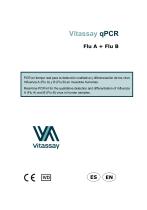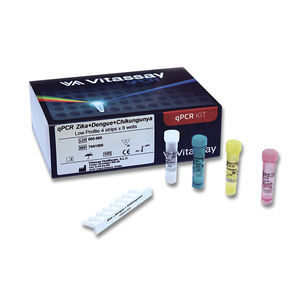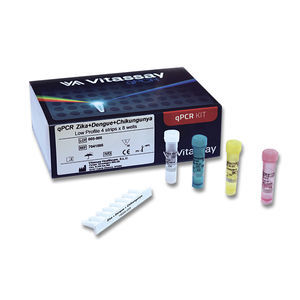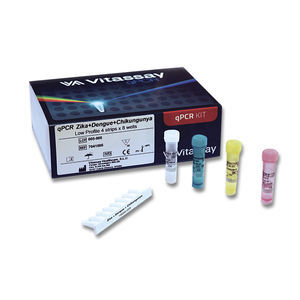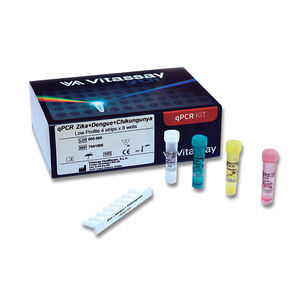
- Laboratory
- Laboratory medicine
- Flu test kit
- VITASSAY HEALTHCARE S.L.

- Products
- Catalogs
- News & Trends
- Exhibitions
Flu test kit 70 seriesinfluenza Ainfluenza Bfluorescence
Add to favorites
Compare this product
fo_shop_gate_exact_title
Characteristics
- Applications
- flu
- Micro-organism
- influenza A, influenza B
- Analysis mode
- fluorescence, for qPCR
- Format
- lyophilized
Description
Vitassay qPCR kits are ready to use real-time PCR assays designed to amplify and detect pathogen.
Vitassay qPCR Kits contains in each well enzymes, buffer, primer and probes as well as an internal control in a lyophilized format.
The kits include a positive and a negative control.
Identification of pathogen DNA or RNA occurs by the use of target specific primers ans fluorecent labeled hydrolysis probes which hybridize conserved regions in the genomes of the differentpathogens
Real-time PCR kit for the qualitative detection and differentiation of Influenza
A (Flu A) and B (Flu B) virus in human samples.
Principle of the test
Vitassay qPCR Flu A + Flu B test is based on the real-time amplification of specific
conserved fragments of the M1 gene of Influenza A and Influenza B virus. The viral RNA
extracted is transcribed into cDNA using a specific primer by reverse transcription step
followed immediately in the same well by polymerase chain reaction. The virus presence
is detected by an increase in observed fluorescence during the reaction upon hydrolysis
of the fluorescent probe.
The assay is based on 5' exonuclease activity that uses two primers and a fluorogenic
hydrolysis probe to detect accumulation of the amplified target sequence during the PCR
reaction. When the polymerase begins to extend the primers, the probe is hydrolyzed by
its 5'-3' exonuclease activity causing the spatial separation of the fluorophore and the
quencher.
Catalogs
Flu-A-Flu-B
32 Pages
Vitassay_Catalogue
20 Pages
Exhibitions
Meet this supplier at the following exhibition(s):

Related Searches
- Assay kit
- Solution reagent kit
- Blood assay kit
- Molecular biology reagent kit
- Plasma assay kit
- Infectious disease detection kit
- Blood rapid diagnostic test
- Rapid lateral flow test
- Diagnostic reagent kit
- Immunoassay rapid diagnostic test
- Cassette rapid diagnostic test
- Molecular test kit
- Virus rapid diagnostic test
- Enzyme reagent kit
- Respiratory infection test kit
- Infectious disease rapid diagnostic test
- Optical assay kit
- Clinical assay kit
- Fluorescence assay kit
- Buffer solution reagent kit
*Prices are pre-tax. They exclude delivery charges and customs duties and do not include additional charges for installation or activation options. Prices are indicative only and may vary by country, with changes to the cost of raw materials and exchange rates.

